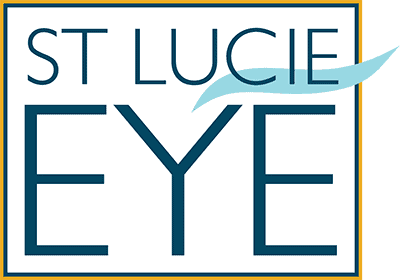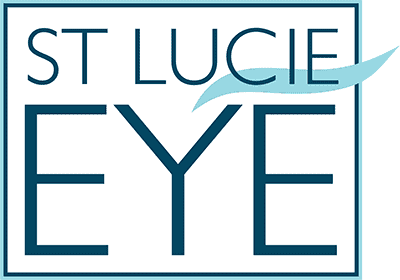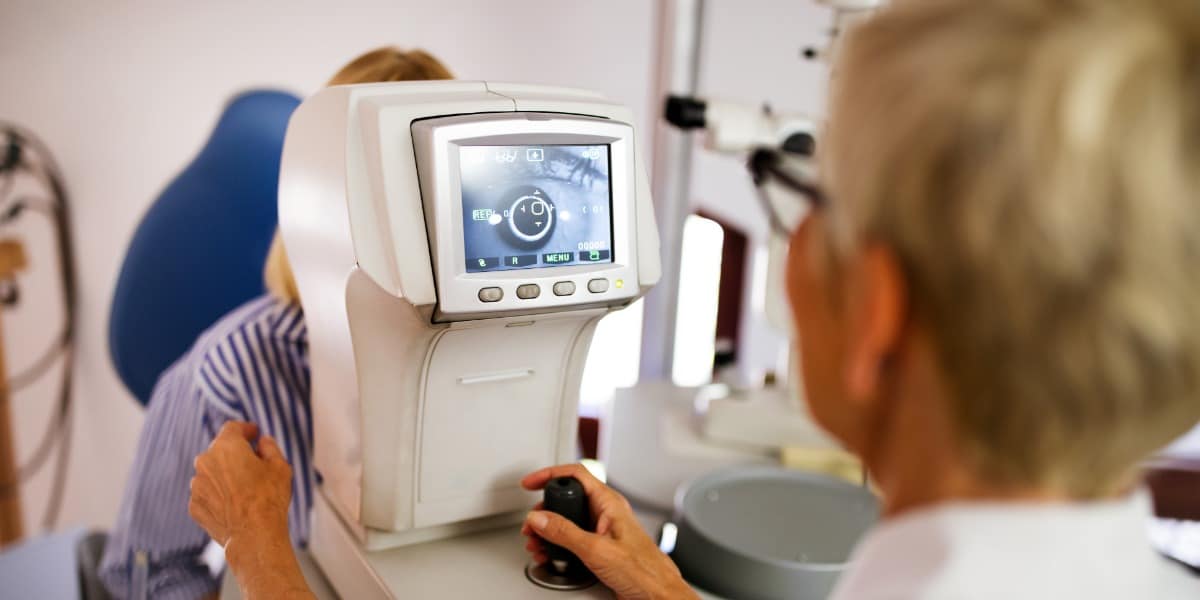We throw around a lot of big words in eye care.
Glaucoma, Macular Degeneration, Cataract, Pterygium, Astigmatism, Retinopathy… you get the picture.
But rather than worry about what they all mean, it’s important to remember that prioritizing regular eye exams can prevent big word problems that you never saw coming.
January is National Glaucoma Awareness Month. Let’s begin there.
What is Glaucoma?
Glaucoma is a group of eye diseases that destroy delicate optic nerve fibers responsible for transmitting visual signals to the brain.
The destruction typically occurs slowly which is why glaucoma can be so devastating. It is often only confirmed after significant damage to the optic nerve, causing permanent vision loss.
Identifying and treating glaucoma has changed significantly over the years. You might be surprised with how sophisticated the process has become. The ultimate goal is to prevent untimely vision loss with early detection.
What Happens to my Vision with Glaucoma?
Since glaucoma typically begins slowly, vision changes are often subtle at first.
Loss of side vision is a classic sign of glaucoma, although it may be extremely difficult to notice in early stages. Other signs and symptoms include seeing halos around lights, strong sensitivity to light, rapid vision loss, or eye pain. *Sudden changes in vision or acute eye pain can be medical emergencies. Call your doctor right away.
According to a study of patients with early to moderate glaucoma by the American Journal of Medical Science, loss of peripheral vision was not always the first problem glaucoma patients noticed. Common complaints included requiring more light to see and blurry vision in addition to loss of side vision.
“Patients with a greater amount of visual field loss were more likely to report difficulty seeing objects on one or both sides, as if looking through dirty glasses and trouble differentiating boundaries and colors.”
(Am J Med Sci. 2014 Nov; 348(5): 403–409)
It’s important to note that early symptoms of glaucoma often mimic other concerning eye conditions. That’s why annual eye exams are so important. Your ophthalmologist can determine if subtle symptoms are the beginning of a larger problem.
How is Glaucoma Diagnosed?
Most people associate glaucoma diagnosis with the dreaded pressure test, or ‘puff of air’.
Unfortunately, glaucoma is not that easy to diagnose and can only be confirmed after a complete eye exam and careful evaluation of the optic nerve. Intraocular pressure is only one measure of glaucoma risk.
A comprehensive glaucoma exam may include five testing categories:
I. Eye Pressure (IOP): Tonometry
Having eye pressure higher than normal puts you at risk for glaucoma.
It is important to understand that having higher pressure than normal does not mean a definite diagnosis of glaucoma. Although most people fall into a certain normal range, it is possible to have glaucoma with lower eye pressure and not have glaucoma with higher pressures. (see Pachymetry below)
What is more important is whether the pressure fluctuates up and down and how that particular eye pressure affects the functions of the eye.
Your doctor will use a machine to blow a quick puff of air onto your eye, or use an applanation tool to gently touch the eyes surface once it has been numbed.
The applanation tonometer measures the amount of pressure necessary to flatten the cornea. This is the most sensitive IOP tool, but the cornea must be clear and regularly shaped for it to function properly.
II. Corneal Thickness: Pachymetry
Corneal thickness is an important factor in accurately diagnosing eye pressure.
Patients with thin corneas (less than 555 µm) can show artificially low IOP readings.*
This is dangerous because if actual IOP is higher than your reading indicates, you may be at risk for glaucoma. It is important that your doctor has an accurate pressure reading to properly diagnose your risk and decide upon a treatment plan.
III. Optic Nerve Imaging: Dilated Eye Exam & Nerve Fiber Analysis
In a dilated eye exam, drops are used to widen (dilate) your pupils. Your doctor will use a light and magnifying lens to check the optic nerve for damage or irregularities.
Optic nerve imaging uses sophisticated 3-dimensional imagining to assist in the clinical evaluation and monitoring of glaucoma.
Optical Coherence Tomography (OCT), Confocal Scanning Laser Ophthalmoscopy (HRT), and Scanning laser polarimetry (SLP) (GDx Nerve Fiber Analyzer, Carl Zeiss Meditec), precisely measure the optic nerve and retinal nerve fiber layer.
Abnormal findings can indicate glaucoma damage before functional vision loss is discovered. These tests are especially good for patients who are considered ‘glaucoma suspects’ or when its necessary to document changes in nerve fibers as glaucoma progresses. https://eyewiki.aao.org/Optic_Nerve_and_Retinal_Nerve_Fiber_Imaging
IV. Side Vision: Perimetry / Visual Field Test
A visual field test measures how far the eye sees in any direction without moving.
During perimetry, you’ll be asked to look straight ahead at a screen. A light or image will appear in various places around the screen. By indicating when you see flashes of light in different locations, the test measure how sensitive your vision is across different parts of the visual field.
V. Eye Drainage Angle: Gonioscopy
Our eyes constantly make aqueous humor. As new aqueous flows into your eye, about the same amount should leave the eye through the drainage angle. This process keeps pressure in your eye (called intraocular pressure or IOP) stable. If the drainage angle is not working properly, fluid builds up. Pressure in the eye rises, damaging the optic nerve. This is often how glaucoma develops.
In this test, the doctor provider will use a special hand-held contact lens on the eye to view the inside of the eye from different angles. It will show if the angle between the iris and cornea is too wide (a possible sign of open-angle glaucoma) or too narrow (a possible sign of closed-angle glaucoma).
Depending on your needs, your doctor may include other tests too. Ask your doctor if you have questions.
Am I at Risk for Glaucoma?
Anyone can get glaucoma, but you are at higher risk especially if you are over age 60, are African American or Hispanic/Latino and over age 40, or have a family history of glaucoma.
There’s no cure for glaucoma, but it can be treated. Starting treatment early is the best way to stop damage and protect your vision.
About St Lucie Eye
St. Lucie Eye has been delivering comprehensive eye care to friends and neighbors on the Treasure Coast for over 50 years. Our practice is committed to your best vision and quality of life.
With trusted ophthalmology experience and friendly staff of trained and certified technicians, we offer the latest in custom cataract procedures, glaucoma management, macular degeneration, and cornea treatments for complete, personalized care.
St Lucie Eye has three convenient eye care facilities, all with full optical services in Fort Pierce, Port St. Lucie, and St. Lucie West.
We’re here to help! Talk to us about your concerns.


